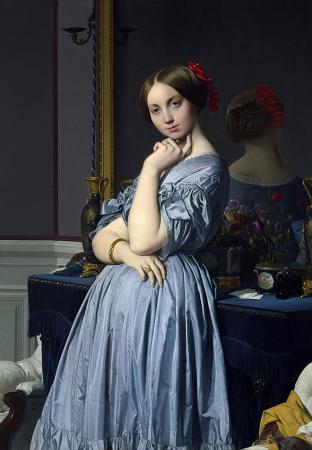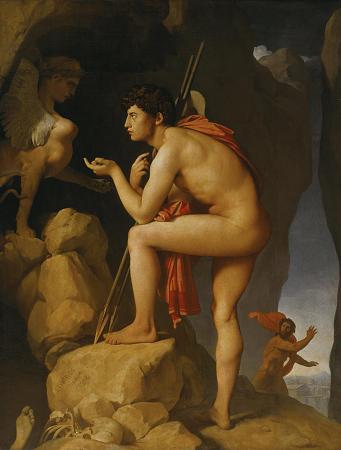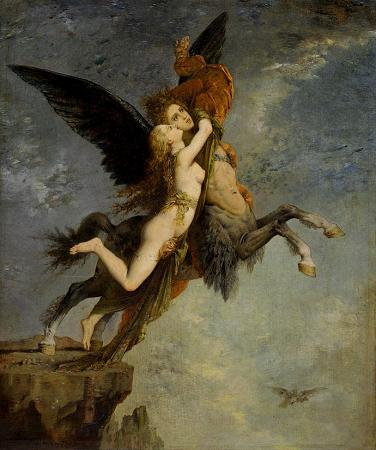Jean-Auguste-Dominique Ingres (1780 - 1867). Jean-Auguste-Dominique Ingres was a French Neoclassical painter. Among his best known paintings are Odalisque in the Louvre, Jupiter and Thetis in the Musee Granet and The Last Breath of Leonardo da Vinci in the Musee du Petit Palace. Ingres was profoundly influenced by past artistic traditions and aspired to become the guardian of academic orthodoxy against the ascendant Romantic style. Although he considered himself a painter of history in the tradition of Nicolas Poussin and Jacques-Louis David, it is his portraits, both painted and drawn, that are recognized as his greatest legacy. His expressive distortions of form and space made him an important precursor of modern art, influencing Picasso, Matisse and other modernists. Born into a modest family in Montauban, he travelled to Paris to study in the studio of David. In 1802 he made his Salon debut, and won the Prix de Rome for his painting The Ambassadors of Agamemnon in the tent of Achilles. By the time he departed in 1806 for his residency in Rome, his style, revealing his close study of Italian and Flemish Renaissance masters, was fully developed, and would change little for the rest of his life. While working in Rome and subsequently Florence from 1806 to 1824, he regularly sent paintings to the Paris Salon, where they were faulted by critics who found his style bizarre and archaic. He received few commissions during this period for the history paintings he aspired to paint, but was able to support himself and his wife as a portrait painter and draughtsman. He was finally recognized at the Salon in 1824, when his Raphaelesque painting of the Vow of Louis XIII was met with acclaim, and Ingres was acknowledged as the leader of the Neoclassical school in France. Although the income from commissions for history paintings allowed him to paint fewer portraits, his Portrait of Monsieur Bertin marked his next popular success in 1833. The following year, his indignation at the harsh criticism of his ambitious composition The Martyrdom of Saint Symphorian caused him to return to Italy, where he assumed directorship of the French Academy in Rome in 1835. He returned to Paris for good in 1841. In his later years he painted new versions of many of his earlier compositions, a series of designs for stained glass windows, several important portraits of women, and The Turkish Bath, the last of his several Orientalist paintings of the female nude, which he finished at the age of 83. Ingres was born in Montauban, Tarn-et-Garonne, France, the first of seven children of Jean-Marie-Joseph Ingres and his wife Anne Moulet. His father was a successful jack-of-all-trades in the arts, a painter of miniatures, sculptor, decorative stonemason, and amateur musician; his mother was the nearly illiterate daughter of a master wigmaker. From his father the young Ingres received early encouragement and instruction in drawing and music, and his first known drawing, a study after an antique cast, was made in 1789. In 1791, Joseph Ingres took his son to Toulouse, where the young Jean-Auguste-Dominique was enrolled in the Academie Royale de Peinture, Sculpture et Architecture. There he studied under the sculptor Jean-Pierre Vigan, the landscape painter Jean Briant, and the neoclassical painter Guillaume-Joseph Roques. Roques' veneration of Raphael was a decisive influence on the young artist. Ingres won prizes in several disciplines, such as composition, figure and antique, and life studies. His musical talent was developed under the tutelage of the violinist Lejeune, and from the ages of thirteen to sixteen he played second violin in the Orchestre du Capitole de Toulouse. From an early age he was determined to be a history painter, which, in the hierarchy of artists established by the Royal Academy of Painting and Sculpture under Louis XIV, and continued well into the 19th Century, was considered the highest level of painting.
more...














